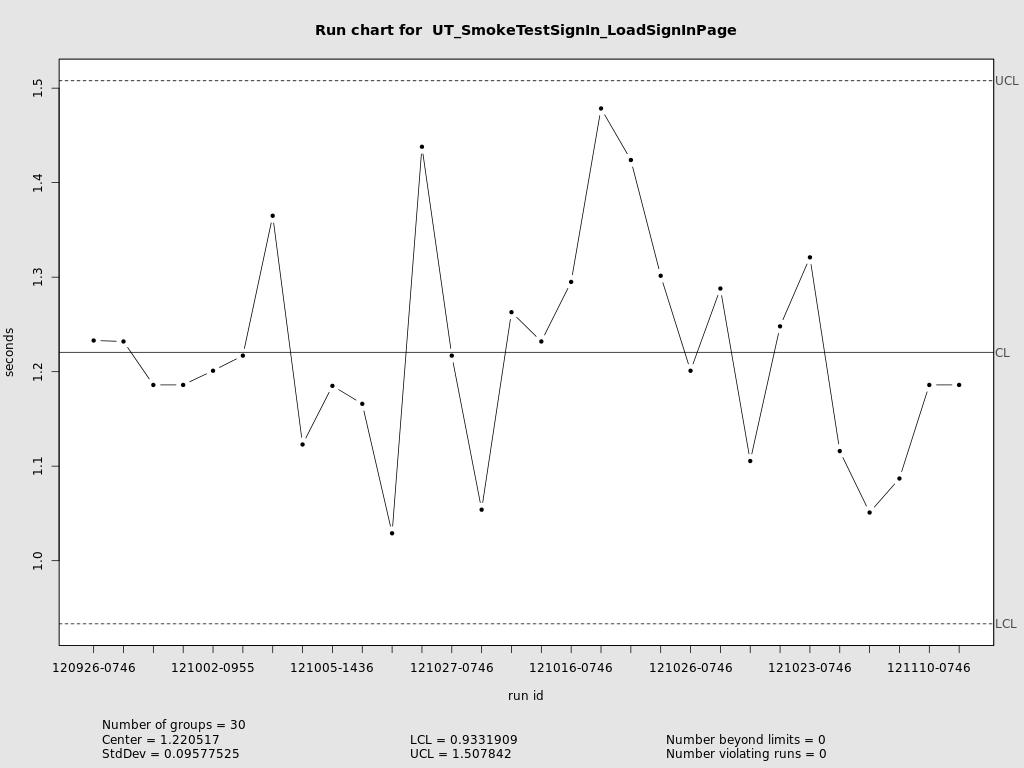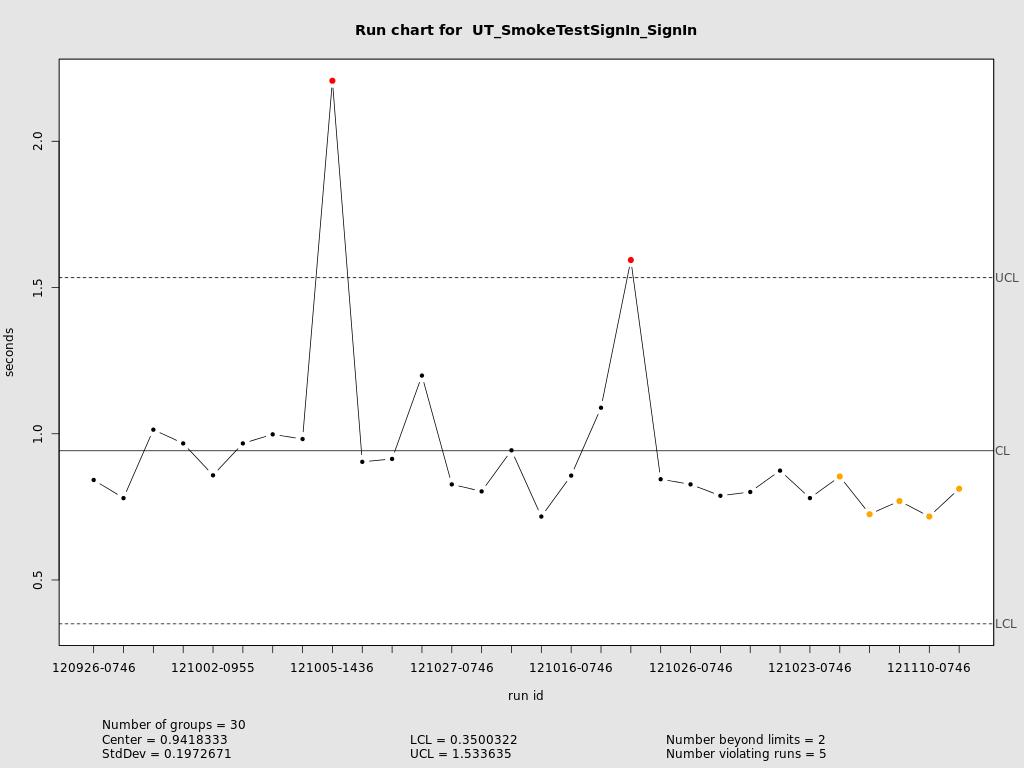Building Reliable Websites
Load and Performance Edition
Stephen Kuenzli
@author skuenzli
breaking systems for fun and profit since 2000
The Process
- determine expected site load
- validate site handles expected load
- stay operational when load exceeds expectations
- profit!
determine expected site load
Key Metrics
- Throughput: requests per second
- Performance: response time
What percentage of your customers do you care about?
50%
95%
99%
?
Define a Service Level Agreement
- Throughput: 42 requests per second
- Performance: 99% of response times <= 100ms
Don't Forget!
- network latency and bandwidth
- client processing power
HOWTO: measure historical throughput
# total number of GETs to /myservice for a given day
grep -c 'GET /myservice' logs/app*/access.log.2012-11-16
# estimate peak hour for service from sample
grep 'GET /myservice' logs/app??5/access.log.2012-11-16 | \
perl -nle 'print m|/201\d:(\d\d):|' | sort -n | uniq -c
# total number of GETs to /myservice at peak hour
grep -c '2012-11-16 17:.*GET /myservice' \
logs/app*/access.log.2012-11-16
HOWTO: measure response time
# processing times recorded by server in access log
grep "GET /myservice" logs/app*/access.log.2012-11-16 | \
cut -d\" -f7 | sort -n > service.access_times.2012-11-16
what about network latency and bandwidth?
does request fit in the client's resource budget? 50/95/99%?
all models are wrong; some models are useful
|
model +/- 20%
|
adjust for
|
validate site handles expected load
validation process
- select a tool
- build a simulation
- run simulation multiple times / periodically
- analyze trends
Gatling is an Open Source Stress Tool with:
- A DSL to describe scenarios
- High performance
- HTTP support
- Meaningful reports
- Executable from command-line or maven
- A scenario recorder
gatling-tool.org
build simulation
run simulation multiple times / periodically
- gather statistically significant results
- establish a baseline
- verify site does [not meet] SLAs
- detect changes over time
analyze trends
detect changes in trend with control charts
is process changing?

is process changing?

stay operational when load exceeds expectations
the needs of the many outweigh the needs of the few or the one
a dead site is no good to anyone
know the site's limits and stay within them
implement a series of circuit breakers that can be tripped to reduce load in a managed way
- manual breakers, tripped by operations staff
- automatic breakers, tripped by software
Example services ranked by criticality
- send marketing email off-line / off-hours
- update customer's dashboard breaker #1
- upload images breaker #2
- render images breaker #3
- sign-in
- checkout
- save customer's work
there's usually a trade-off available
Resources
- This presentation: https://github.com/skuenzli/building-reliable-websites
- Concurrency Limiting Filter: https://github.com/skuenzli/simplyreliable
- Web Operations: http://shop.oreilly.com/product/0636920000136.do
- Circuit Breaker Pattern: http://doc.akka.io/docs/akka/2.1.0-RC1/common/circuitbreaker.html
- Gatling: http://gatling-tool.org
- USL